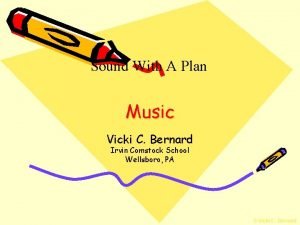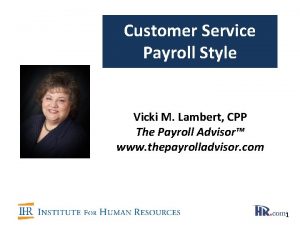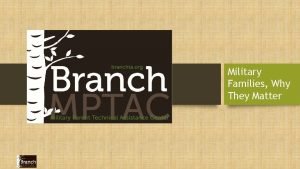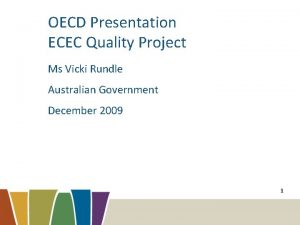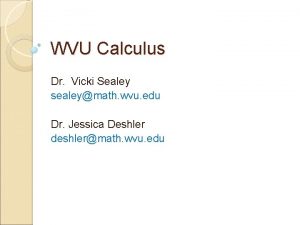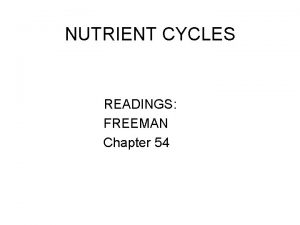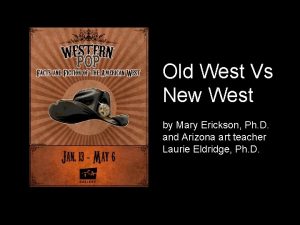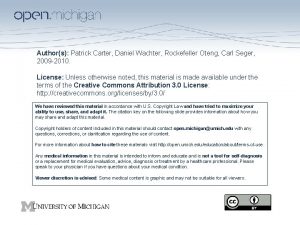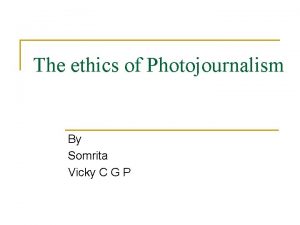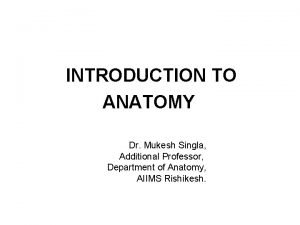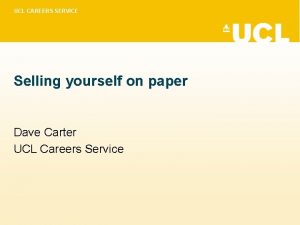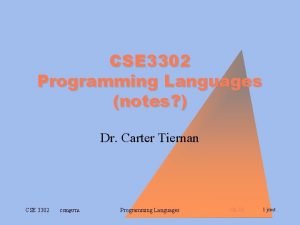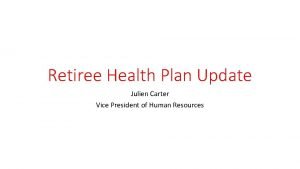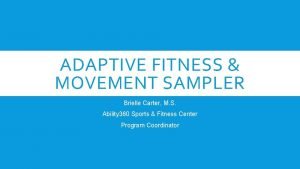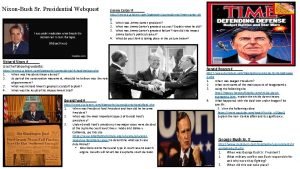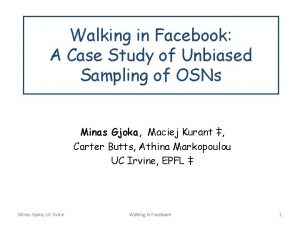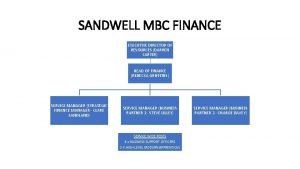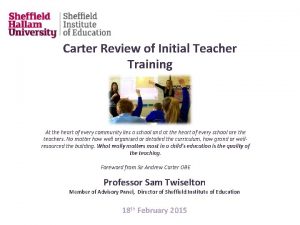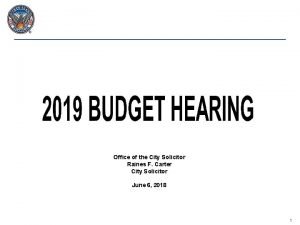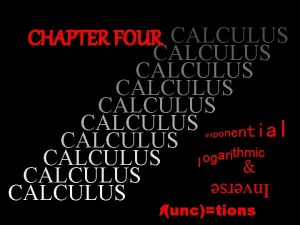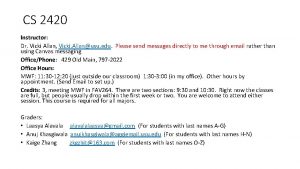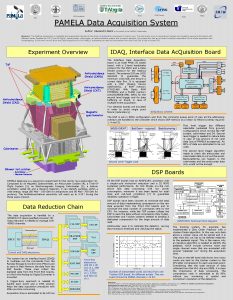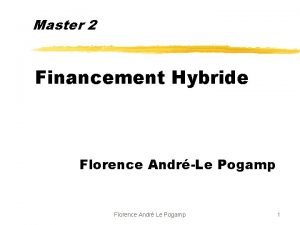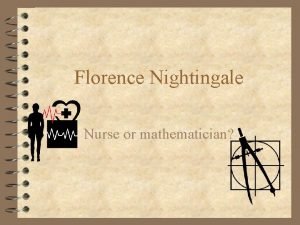Changes in AP Calculus Vicki Carter West Florence



































- Slides: 35

Changes in AP Calculus Vicki Carter, West Florence HS, SC Stephen Davis, Davidson College, NC Ben Hedrick, College Board, GA

Ben Hedrick The College Board Director, AP Mathematics Curriculum and Assessment

AP Redesign ► To continually enhance alignment with current best practices in college-level learning and help students develop the knowledge and skills essential for college majors and subsequent careers, AP is undergoing a number of key changes, including the redesign of several courses in each discipline and the introduction of new courses over the next few years. ► https: //advancesinap. collegeboard. org/

AP Calculus Update ► Changes modest compared to those of other courses ► Small content change ► Small exam change ► Already strong focus on conceptual understanding ► Follows in the same spirit and making conceptual understanding and essential practices more explicit ► Uses an Understanding by Design framework ► Will still receive the same level of teacher support products ► No need to submit a new syllabus*

From the new AP Calculus Course and Exam Description

From the new AP Calculus CED

MPAC 1: Reasoning with Definitions and Theorems MPAC 1 b: Confirm that hypotheses have been satisfied in order to apply the conclusion of a theorem.

MPAC 2: Connecting Concepts MPAC 2 b: Use the connection between concepts (e. g. rate of change and accumulation) to solve problems.

MPAC 3: Implementing Algebraic/Computational Processes MPAC 3 c: Complete algebraic/computational processes correctly. MPAC 3 b: Sequence algebraic/computational processes logically.

MPAC 4: Connecting Multiple Representations MPAC 4 a: Associate tables, graphs, and symbolic representations of functions.

MPAC 5: Building Notational Fluency MPAC 5 b: Connect notation to different representations (e. g. relating the notation for the definite integral to that of the limit of a Riemann sum).

MPAC 6: Communicating MPAC 6 c: Explain the meaning of expressions, notation, and results in terms of a context (including units).

Communicating and Technology ► Communicating is a skill involved in calculus problems regardless of calculator usage. ► Using technology is a tool and also a choice. It must be applied strategically, and this is made explicit in the MPACs. ► “critically interpret and accurately report information provided by technology”

Vicki Carter West Florence High School AP Calculus Development Committee Co-Chair

Standards for Mathematical Practice ► “The Standards for Mathematical Practice describe varieties of expertise that mathematics educators at all levels should seek to develop in their students. ” ► There should be a natural transition from these varieties of expertise developed in the K-12 student to the level of competence expected of AP Calculus students. ► The MPACs connect to and expand upon the skills that should be developed in the pre-AP student.

Standards for Mathematical Practice ► MPAC 1: Reasoning with definitions and theorems. Students can: ► Mathematical Practices ► Find meaning in problems ► Look for entry points ► Analyze, conjecture and plan solution pathways ► Understand use information to construct arguments ► Make and explore the truth of conjectures ► In solving problems, maintain oversight of the process while attending to detail

Standards for Mathematical Practice ► MPAC 3: Implementing algebraic/computational processes. Students can: ► Mathematical Practices ► Make sense of quantities and their relationship in problems ► Consider the available tools when solving problems ► Calculate accurately and efficiently ► Evaluate the reasonableness of their immediate results

Standards for Mathematical Practice ► MPAC 5: Building notational fluency. Students can: ► Mathematical Practices ► Make sense of quantities and their relationship in problems ► Use clear definitions, state the meaning of symbols and are careful about specifying units of measure and labeling axes

Standards for Mathematical Practice ► MPAC 6: Communicating. Students can: ► Mathematical Practices ► Communicate precisely to others ► Use clear definitions, state the meaning of symbols and are careful about specifying units of measure and labeling axes

Stephen Davis Davidson College AP Calculus Chief Reader

2017 AP Calculus Exam Format

Course Update: Topic Changes for 2017 No topics will be removed from the AP Calculus program, and the following topics will be added: ► L’Hospital’s Rule will be included in AP Calculus AB. ► The limit comparison test, absolute and conditional convergence, and the alternating series error bound will be added to AP Calculus BC.

AP Calculus Reading ► 2016: ~435 K exams ► 2016: ~920 readers; roughly 40% college & 60% high school ► Exam written by the Development Committee ► The Development Committee advises the Chief Reader on scoring guidelines for each question. ► “Reading”: free response questions are scored during 7 days in early June ► ► brief / eat / read / eat / repeat… “Pre-reading”: 5 days for Reading leadership to fine-tune interpretation of standards

Free Response Example ► 2016 -2017 AP Calculus Curriculum Framework, p 43.

Free Response Example ► 2016 -2017 AP Calculus Curriculum Framework, p 43.

Free Response Example ► 2016 -2017 AP Calculus Curriculum Framework, p 43.

Free Response Example ► 2016 -2017 AP Calculus Curriculum Framework, p 43.

Free Response Example ► 2016 -2017 AP Calculus Curriculum Framework, p 43.

Free Response Example ► 2016 -2017 AP Calculus Curriculum Framework, p 43.

Free Response Example ► 2016 -2017 AP Calculus Curriculum Framework, p 43.

Free Response Example ► 2016 -2017 AP Calculus Curriculum Framework, p 43.

Free Response Example ► 2016 -2017 AP Calculus Curriculum Framework, p 43.

Contributing Factors for the Grade Setting Multiple Choice equators ► Chief Reader qualitative rating of difficulty of the exam ► ► College comparability ► ► Issue: change in college cohort New: Achievement Level Descriptors (ALDs) ► ► ► ALD matrix (rows: MPAC elements; columns: 1/2/3/4/5 score levels; entry: what a student at that level is expected to achieve); MC items coded to achievement levels ALD matrix is revised with use by the Development Committee, and reviewed by a panel of experts; to be used as a component in grade setting in June 2017; validated by a panel of experts post-exam using performance data.

Links apcentral. collegeboard. com ► Follow links to … ► Home > AP Courses and Exams > Course Home Pages > AP Calculus AB Course Home Page ► Home > AP Courses and Exams > Course Home Pages > AP Calculus BC Course Home Page ► ► Exam Information & Resources ► Classroom Resources ► Link to Course & Exam Description, Course Planning and Pacing Guides (both AB and BC), Video overview modules, and other resources relating to the course update.

Questions? Vicki Carter: vcarter@fsd 1. org Stephen Davis: stdavis@davidson. edu Ben Hedrick: bhedrick@collegeboard. org
 Elizabeth mulroney
Elizabeth mulroney Chemical change vs physical change
Chemical change vs physical change Vicki fleming
Vicki fleming Vicki evans
Vicki evans Vicki freeman
Vicki freeman Gene spadaro juvenile center
Gene spadaro juvenile center Vicki carolin
Vicki carolin Vicki nixon
Vicki nixon Vicki bernard
Vicki bernard Vicki lambert
Vicki lambert Vicki farnsworth
Vicki farnsworth Vicki rundle
Vicki rundle Vicki amon-higa
Vicki amon-higa Vicki turetsky
Vicki turetsky Math learning center wvu
Math learning center wvu Vicki freeman
Vicki freeman Vicki bosanko
Vicki bosanko Vicki kijewski
Vicki kijewski What creates wind
What creates wind Zuid zuid oost
Zuid zuid oost East is east and west is west
East is east and west is west West north west wind direction
West north west wind direction Old west vs new west
Old west vs new west Dr fernando mora-mclaughlin
Dr fernando mora-mclaughlin Scomboid
Scomboid Ethics in photojournalism
Ethics in photojournalism Henry vandyke carter
Henry vandyke carter Dave carter ucl
Dave carter ucl Carter tiernan
Carter tiernan Julien carter
Julien carter Brielle carter
Brielle carter Presidential webquest
Presidential webquest Carter butts uci
Carter butts uci Clare sandland
Clare sandland Carter review of initial teacher training
Carter review of initial teacher training City organizational chart
City organizational chart








